12 Nights / 13 Days
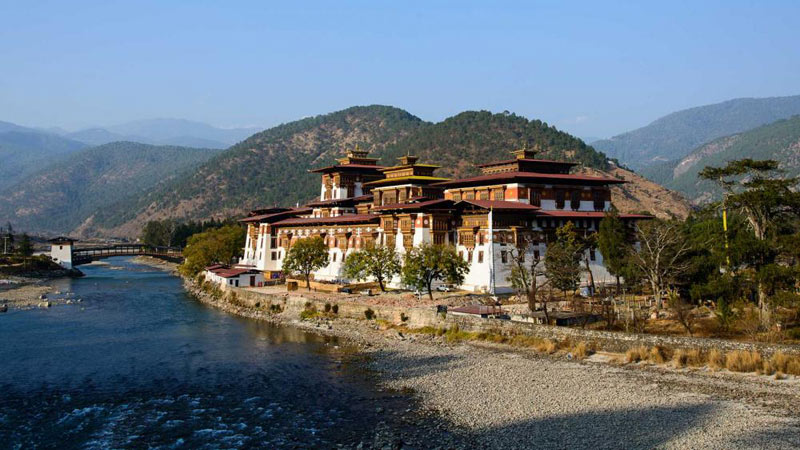
On a clear day, the flight to Paro is one of the most spectacular of all mountain flights. You will see major Himalayan peaks such as Everest, Kanchenjunga and Makalu, and then on the final approach to Paro Bhutan’s own snowy peaks, Chomolhari, Jichu Drake and Tserimgang will come into view. Bhutan’s first gift to you as you disembark from the aircraft will be cool, clean fresh mountain air. You are welcome by your term escort from Bhutan View Tours & Travels and after completion of arrival formalities will be taken to your hotel. Afternoon free for activities or at leisure. In the evening, take a stroll around Paro market. Dinner and overnight at the hotel in Paro.
Paro is a most picturesque valley, with quaint hamlets clustered amidst terraced paddy fields. The town still maintains tradition by way of its architecture and simple way of life. In the morning, visit Ta Dzong, formerly a watchtower but now housing the National Museum. Ta Dzong holds unique and varied collections, ranging from ancient armor to textiles, thangkha paintings, stamps, coins, and natural history. Then walk down a hillside trail to visit Paro Dzong (Rinpung Dzong) built in 1646 during the time of Shabdrung Ngawang Namgyal. It now houses Paro’s monk body and the offices of the civil administration. Rinpung Dzong is the venue for the famous Paro Tsechu, held annually in the spring. After lunch, drive up valley to Drukgyel Dzong or the fort of Drukpa victory. In former times, the Bhutanese repelled invasions by Tibetans from this fortress. Though largely destroyed by fire in 1951, the ruins still present an imposing sight. On a clear day, there is a splendid view of Bhutan’s sacred mountain, Chomolhari from the approach road to Drukgyel Dzong. Also visit a traditional Bhutanese house in the village nestled below the dzong. Then head back towards Paro town, en route visiting Kyichu Lhakhang, established in the 7th century and one of the two oldest shrines in the kingdom (the other is in Bumthang), marking the introduction of Buddhism in Bhutan. Dinner and overnight at the hotel in Paro.
After breakfast, drive to Bhutan’s capital, Thimphu, passing through idyllic countryside, with villages and paddy fields on either side of the road. En route visit Semtokha Dzong, one of the oldest fortresses of the country, which now houses the Institute for Language and Cultural Studies. Afternoon sightseeing in Thimphu valley, visiting: Tashichhodzong, the seat of the government; the National Memorial Chorten, within which there are finely executed wall paintings and delicately fashioned statues which provide deep insight into Buddhist philosophy; and the Handicrafts Emporium, which displays a wide range of the traditional handicrafts for which Bhutan is renowned. You may also be able to catch a game of archery in progress at the Changlimethang sports ground, just below the town. Take an early evening stroll around the market area before dinner. Overnight at the hotel in Thimphu.
In the morning, visit the following: the National Library, with its extensive collection of priceless Buddhist manuscripts; the Institute for Zorig Chusum (commonly known as the Painting School) where students undergo a six-year training course in Bhutan’s 13 traditional arts and crafts; the National Institute of Traditional Medicine (outside only), where Bhutan’s famed traditional herbal medicines are compounded and dispensed. After lunch, proceed to Punakha across Dochu-la pass (3,088m/10,130ft). The highest point on the road is marked by a large Bhutanese chorten and prayer flags fluttering on the hill. On a clear day, there is a breathtaking view over the high peaks of the eastern Himalayas from this spot. On reaching Punakha, check in at the hotel. Punakha served as the capital town of Bhutan until 1955, and it is still the winter seat of the Je Khenpo (Chief Abbot). Visit Punakha Dzong, built by Shabdrung Ngawang Namgyal in the 17th century and situated at the junction of Pho Chu and Mo Chu rivers. Overnight at the hotel in Punakha.
After breakfast, drive to Wangduephodrang and visit the Dzong which is perched on a spur at the confluence of two rivers. The position of the Dzong is remarkable as it completely covers the spur and commands an impressive view both up and down the valley. Wangdue district is famous for its fine bamboo work, stone carvings, and slate which is mined up a valley a few kilometers from the town. Then drive up a winding mountain road through oak and rhododendron forest, and over a high pass down into the Phobjikha valley, surely one of the loveliest high altitude valleys in Bhutan. Phobjikha is one of Bhutan’s few glacial valleys, and chosen winter home of black-necked cranes, migrating from the Tibetan plateau. Explore Phobjikha valley and also visit Gangtey Gompa (Monastery), the only Nyingmapa monastery in western Bhutan. Stay overnight at the guesthouse, or camp under the stars.
In the morning explore Phobjikha valley, hopefully sighting some black-necked cranes, if you are there at the right time of year. Later, drive to Trongsa across Pele-la pass (3,300m/10,830ft). This pass is traditionally considered the boundary between western and central Bhutan. Further down the road, stop to visit Chendebji Chorten erected in the 18th century by a Tibetan lama to cover the remains of an evil spirit that was subdued at this spot. It is built in the Nepalese style, with painted eyes at the four cardinal points. The landscape around Trongsa is spectacular and its impressive dzong, stretched along a ridge above a ravine, first comes into view about an hour before the winding road suddenly leads you into the town. On arrival, check in at the lodge. Dinner and overnight at the lodge in Trongsa.
Morning visit to Trongsa Dzong. Built in 1647 by the Shabdrung, it is the most impressive dzong in Bhutan. Then visit Ta Dzong on the hillside above the town, built as a watchtower to guard Trongsa. After lunch proceed to Bumthang, one of the most spectacular valleys in Bhutan and also the holy heartland of Buddhism. The 68 km. journey takes about 3 hours. The road winds steeply up to Yutong-la pass (3,400m/11,155ft), then runs down through dense coniferous forest to enter a wide, open, cultivated valley, known as Chumey valley. From here it is about an hour to Bumthang, a most pleasant run in the soft, late afternoon light. Overnight at the lodge in Bumthang.
Bumthang is the general name given to a group of four valleys - Chumey, Choekhor, Tang and Ura, with altitudes varying from 2,600 to 4,000m/8,530 to 13,125ft. In the morning we will visit Kurje Lhakhang, one of the most sacred places in the kingdom as Bhutan’s “patron saint”, Guru Rinpoche (Padmasambhava) meditated here. From Kurje monastery, a tarmac road heads south along the right bank of the river to Jambey Lhakhang. This temple, erected by the Tibetan king Songtsen Gampo in the 7th century, is one of the two oldest in Bhutan (the other being Kyichu Lhakhang in Paro). After lunch, we will visit Tamshing Lhakhang, founded in 1501 by Pema Lingpa. It contains interesting and ancient Buddhist wall paintings. Later on we will visit Jakar Dzong, “the castle of the white bird, then take a stroll through Bumthang’s market area before returning to the lodge. Dinner and overnight at the lodge in Bumthang.
The journey continues eastwards, winding through more rugged terrain. The drive to Mongar takes about 6 hours, with spectacular views en route. We will drive up into the hills above the valley and then past Ura village, before climbing sharply to the highest point on Bhutan’s motorable road network, Thrumsing-la pass (4,000m/13,125ft). From here, the road gradually descends to the alpine valley of Sengor, with wonderful views of cascading waterfalls and the hills of eastern Bhutan along the way. Vegetation changes from alpine to subtropical with the loss of height, and bamboos and luxuriant ferns overhang the road as we drop down to the valley floor. The descent stops at 700m/2,300ft, where we cross the Kuri Chu (river). We ascend again through pine forests, maize fields and eastern hamlets to reach Mongar town, high on a gentle slope above the valley. Picnic lunch at a scenic spot en route to Mongar. We visit Mongar Dzong, built in the 1930s and one of Bhutan’s newest dzongs, but constructed in the same way as all previous dzongs, without either plans or the use of nails. Overnight at the lodge in Mongar.
This trip of about 96 km. takes only 3 hours. The first part of journey is through leafy forest filled with ferns. After driving through the Kori-la pass (2,450m/8,040ft), marked by a pretty chorten and a mani wall, we descend rapidly through corn fields and banana groves to reach the famous road zigzags just below Yadi, a fairly recent and now fast-growing settlement. After zigzagging down the hillside, the road east runs along the Gamri river. A turnoff on the left leads up to Drametse. The temple, perched on top of a steep hill above the village, was founded by Choeden Zangmo and is the most important monastery of eastern Bhutan. This is the place of origin of the famous Drametse Nga Chham, a masked dance with drums. About 30 km. onwards lies Trashigang (1,100m/3,610ft), which clings to a steep hillside above the Gamri river. Trashigang is the principal township of the biggest and most populated district in the country. After lunch, we will visit Trashigang Dzong, standing at the extreme end of a rocky outcrop far above the river gorge. It serves as the administrative seat for the district and part of the dzong is occupied by the local monastic community. Overnight at the lodge in Trashigang.
After breakfast we visit the temple of Gom Kora, set on a small alluvial plateau, overlooking the river, 24 km. from Trashigang. Gom Kora is a famous place, as Guru Rinpoche is said to have subdued a demon here, trapping it in a rock. We continue on down the road to Doksum village, where you can see women busily weaving traditional Bhutanese fabric, and a chain-link swing bridge dating back to the 15th century. The road turns into the hills here, running up the side of a winding river valley to Trashiyangtse. In former times, Trashiyangtse was an important center because it lies on one of the caravan routes leading from western and central Bhutan. Trashiyangtse is now a rapidly growing town and the administrative center for this district. The area is famous for its wooden containers and bowls, which make inexpensive, attractive and useful souvenirs of a visit to this remote region. We will visit Trashiyangtse Dzong, which overlooks the town and was built in the late 1990s when the new district was created. If time permits, we will also visit the dazzling white stupa of Chorten Kora on the riverbank below the town, and the nearby Institute for Zorig Chusum, where students are trained in Bhutan’s 13 traditional arts and crafts. In the evening we return to Trashigang. Dinner and overnight at the lodge in Trashigang.
After breakfast we visit the temple of Gom Kora, set on a small alluvial plateau, overlooking the river, 24 km. from Trashigang. Gom Kora is a famous place, as Guru Rinpoche is said to have subdued a demon here, trapping it in a rock. We continue on down the road to Doksum village, where you can see women busily weaving traditional Bhutanese fabric, and a chain-link swing bridge dating back to the 15th century. The road turns into the hills here, running up the side of a winding river valley to Trashiyangtse. In former times, Trashiyangtse was an important center because it lies on one of the caravan routes leading from western and central Bhutan. Trashiyangtse is now a rapidly growing town and the administrative center for this district. The area is famous for its wooden containers and bowls, which make inexpensive, attractive and useful souvenirs of a visit to this remote region. We will visit Trashiyangtse Dzong, which overlooks the town and was built in the late 1990s when the new district was created. If time permits, we will also visit the dazzling white stupa of Chorten Kora on the riverbank below the town, and the nearby Institute for Zorig Chusum, where students are trained in Bhutan’s 13 traditional arts and crafts. In the evening we return to Trashigang. Dinner and overnight at the lodge in Trashigang.
After breakfast, drive to Guwahati, the capital town of the Indian northeastern state of Assam, for flight to Delhi/Kolkata or onward program in that region.
Note: This itinerary is a sample itinerary intended to give you a general idea of the likely trip schedule. We have designed this itinerary including the best cultural and natural aspects of this country. We can further customize the itinerary to suit your specific interest and needs to our valued customers.
Bhutan views tours and travels were started by Mr. Yeshub Tshering, a man who worked in this industry since 1976 in different capacities. The proprietor has more than fifteen years of working experience in tourism industry as staff in hotel, trekking organizer, tour guide and travel agent manager.
Bhutan views tours and travels are managed by a very well experienced person in tourism industry supported by highly trained staffs.
Our company Bhutan views tours and travels offer you high quality service in cultural tours, trekking, and mountain biking, Bird watching and special interest tours. Our main aim is to make your visit to Bhutan a memorable one. Visit Bhutan through Bhutan Views Tours and Travels, high quality service and your safety is assured at all times. Read More...
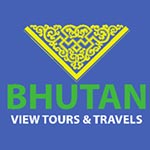
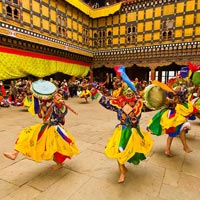 8D/7N
8D/7N
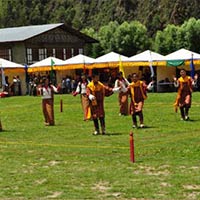 8D/7N
8D/7N
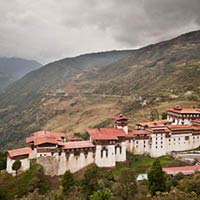 11D/10N
11D/10N
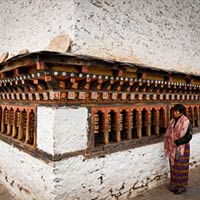 8D/7N
8D/7N
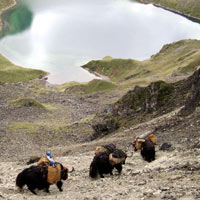 8D/7N
8D/7N
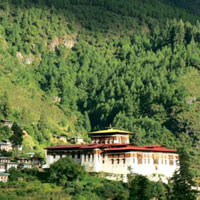 18D/17N
18D/17N
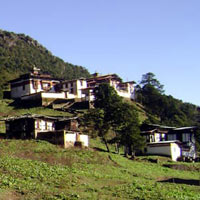 12D/11N
12D/11N
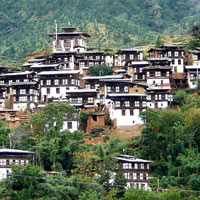 8D/7N
8D/7N
Paro - Thimphu - Gangtey - Gogona - Khotokha - Nyenzergang
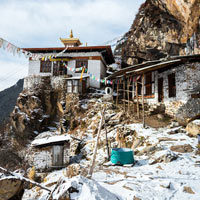 11D/10N
11D/10N
 13D/12N
13D/12N
Guwahati - Shillong - Tawang - Cherrapunji - Bomdila - Golaghat - Mandla
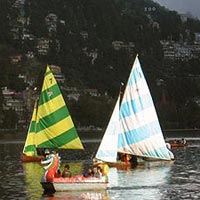 13D/12N
13D/12N
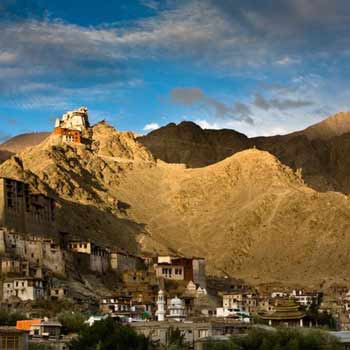 13D/12N
13D/12N
12 Night / 13 Days Haven Himachal Family..
Shimla - Sangla - Kalpa - Kinnaur - Manali - Dharamshala - Dalhousie - Amritsar
 13D/12N
13D/12N
 13D/12N
13D/12N
Shimla - Kulu - Manali - Dharmshala - Da..
Shimla - Manali - Dalhousie - Amritsar - Dharamshala - Kulu
 13D/12N
13D/12N
Rajasthan 12 Nights 13 Days Tour
Bikaner - Jaisalmer - Jodhpur - Mount Abu - Chittorgarh - Pushkar - Jaipur - Udaipur
 13D/12N
13D/12N
Agra - Jaipur - Jodhpur - Jaisalmer - New Delhi - Udaipur
 13D/12N
13D/12N
Golden Triangle Tour with Khajuraho
New Delhi - Jaipur - Fatehpur Sikri - Agra - Jhansi - Orchha - Khajuraho - Varanasi
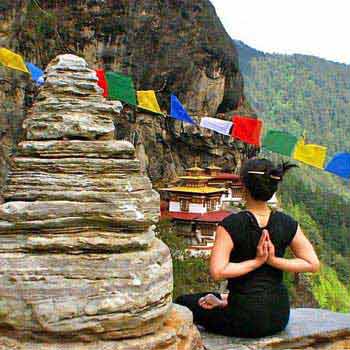 13D/12N
13D/12N
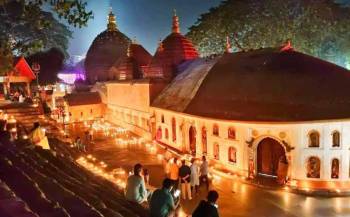 8D/7N
8D/7N
8 Days Guwahati - Kaziranga - Shillong -..
Guwahati - Shillong - Kaziranga - Dawki
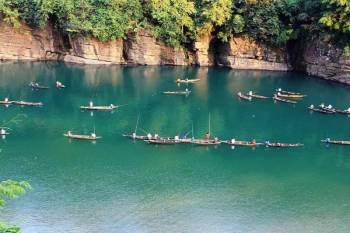 8D/7N
8D/7N
8Days Kaziranga - Shillong - Cherrapunji..
Guwahati - Shillong - Cherrapunji - Kaziranga
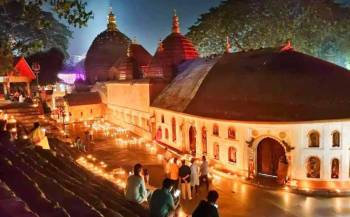 8D/7N
8D/7N
Shillong-Dawki-Kaziranga-Guwahati Tour P..
Guwahati - Shillong - Kaziranga - Dawki
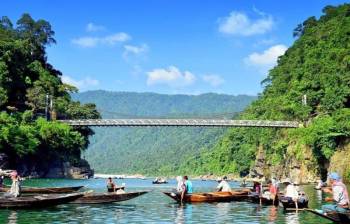 8D/7N
8D/7N
7 Night And 8 Days Assam Tour Package - 2
Guwahati - Shillong - Kaziranga - Dawki
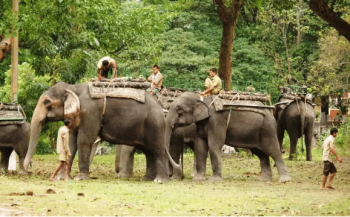 8D/7N
8D/7N
7 Night And 8 Days Assam Tour Package - 1
Shillong - Cherrapunji - Kaziranga - Guwahati
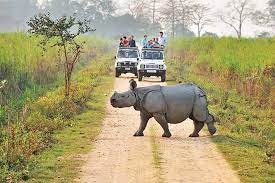 8D/7N
8D/7N
7 Night 8 Days Guwahati - Shillong - Che..
Guwahati - Shillong - Cherrapunji - Kaziranga
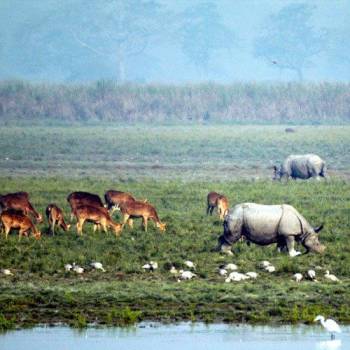 8D/7N
8D/7N
7 Night Kaziranga - Shillong - Cherrapun..
Guwahati - Shillong - Cherrapunji - Kaziranga
 8D/7N
8D/7N
Assam Tour Package 7 Night - 8 Days
Guwahati - Shillong - Cherrapunji - Kaziranga
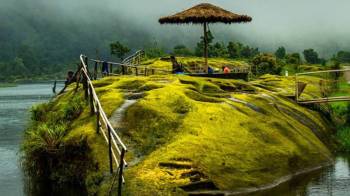 8D/7N
8D/7N
Assam Tour Package 7 Night - 8 Days
Guwahati - Shillong - Cherrapunji - Kaziranga